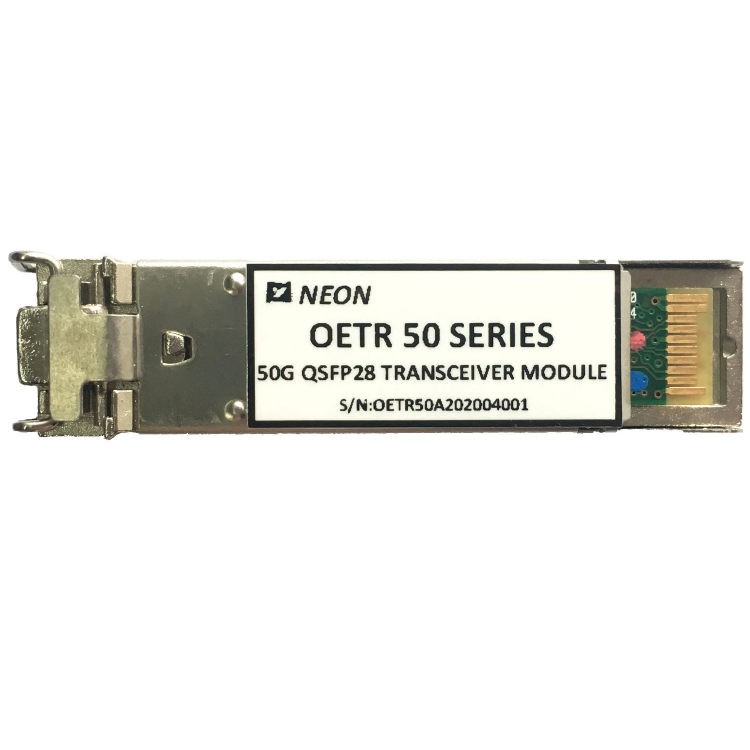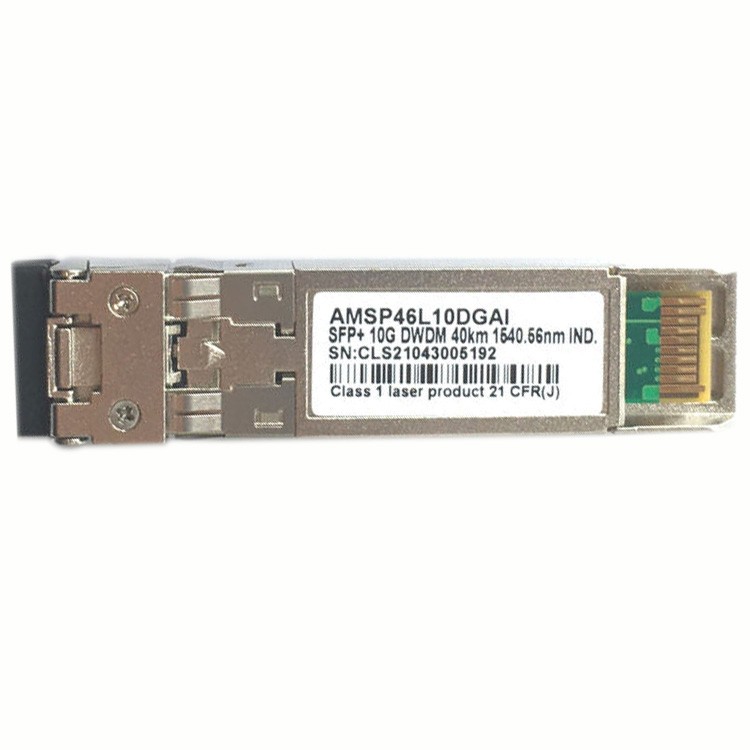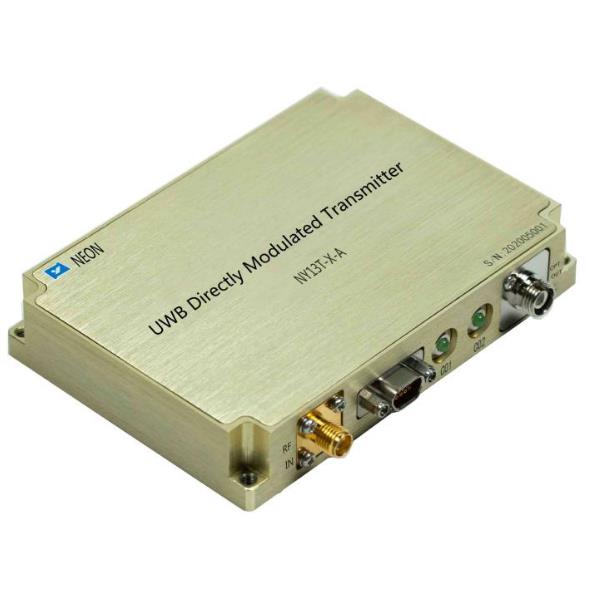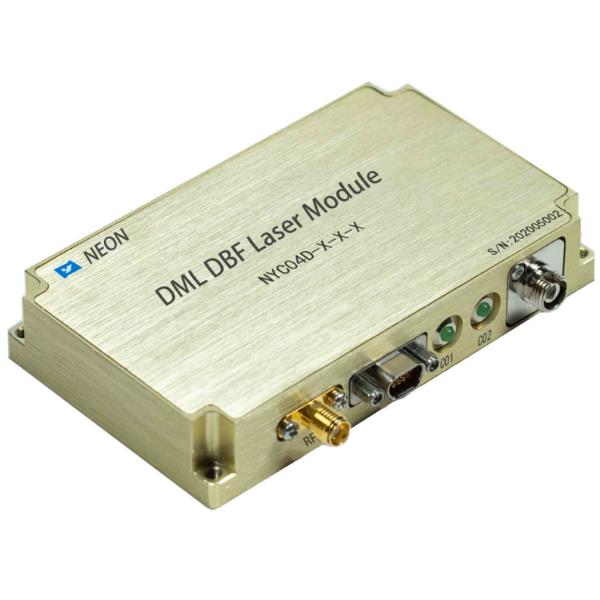What Determines the Speed of An Optical Transceiver?
As with any advanced technology, effective data transmission heavily relies on an optical transceiver, one of the critical components of network equipment, whose speed dictates the performance of the network.
The smooth operation of data centers, 5G bearer networks, and advanced enterprise backbone links all depend on the selection of the appropriate speed for the optical transceiver. What determines the speed of an optical transceiver? This post will address the answer in a technological way. Let’s start!
Part 1. Why is the Speed of Optical Transceivers Important?
As data traffic growth is increasing at a faster pace, the demand for networks to transfer data at higher speeds is also growing day by day. We have seen development accelerate from 10G to 100G and now 400G and even 800G optical modules. Upgrading the speed has been an uncontrollable wave that has been driven by cloud computing, AI workloads, video streaming, and 5G infrastructure.
The transmission speed of an optical transceiver affects not just bandwidth and throughput, but also compatibility of devices, power usage, heat dissipation, and price. For instance:
Higher speed generally requires better quality components, like faster laser drivers and more sensitive receivers, which consume more power and produce greater thermal design demands.
Interoperability becomes an important factor when adding new transceivers to existing network hardware that could possibly support only particular speeds or standards.
Cost-effectiveness is also important, since higher-speed modules are usually more costly, not only in unit price but also because of accompanying infrastructure improvements.
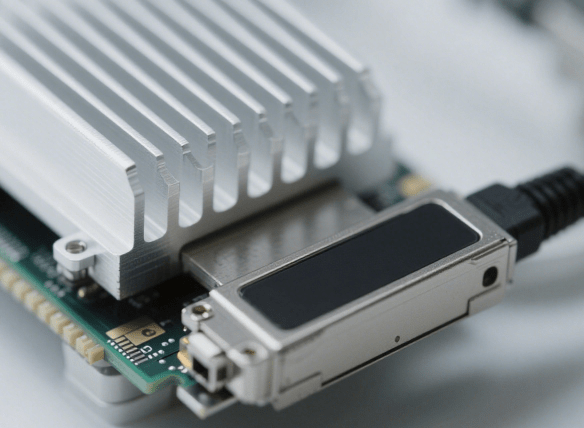
Part 2. Key Factors That Determine the Speed of Optical Transceivers
In order to understand what governs an optical transceiver’s transmission speed, we must analyze various important technical factors. Such factors not only influence module performance but also cost, compatibility, and deployment plan.
1. Transmission Protocol Standards
The speed of an optical transceiver is largely defined by the transmission protocol it will be supporting. The protocols define the maximum data rate, modulation type, interface type, and transmission distance. Some popular standards are:
- 10GBASE-SR/LR – Supports 10Gbps for near (SR) or far (LR) distances.
- 100GBASE-SR4/ER4 – Supports 100Gbps via four 25Gbps lanes, typically via multimode or single-mode fiber.
- 400GBASE-LR8/DR4 – Supports 400Gbps via high-end modulations such as PAM4 and several parallel lanes.
Each standard has strict requirements that influence the internal structure of the transceiver, including the optics, electrical interfaces, and shape factor. Meeting these standards guarantees interoperability within network devices from different manufacturers.
2. Modulation Methods: NRZ and PAM4
Modulation impacts the quantity of data to be conveyed per unit of time. Modulation impacts the effective data rate of a transceiver directly.
- NRZ (Non-Return to Zero) – The normal method in which each symbol carries 1 bit of data. Widely used in 10G and 25G systems.
- PAM4 (Pulse Amplitude Modulation with 4 Levels) – Each symbol carries 2 bits, about twice the data rate within the same bandwidth compared to NRZ.
For example:
- 25Gbps NRZ ≈ 50Gbps PAM4, if the bandwidth is the same.
PAM4 has emerged as the de facto modulation scheme for high-speed transceivers such as 400G and 800G due to its spectral efficiency. However, it also requires more advanced signal processing and better signal integrity.
3. Number of Lanes and Channel Architecture
High-speed optical modules prefer to operate at greater data rates by bundling multiple parallel lanes of transmission. Each lane transmits a slice of the overall data simultaneously.
Examples:
- QSFP28 (100G) – Accommodates 4 lanes of 25Gbps each.
- QSFP-DD (400G) – Uses 8 lanes of 50Gbps (typically PAM4) to deliver 400Gbps.
Total speed of the transceiver is thus determined as:
- Total Speed = Per Lane Speed × Number of Lanes
Such a style of architecture enables scalability and flexibility in achieving higher data rates without appreciably increasing the per-channel speed.
4. Optical Components and Operating Wavelengths
Optical transceivers’ performance is significantly dependent on the inherent optical components’ properties:
Laser Types:
- VCSEL (Vertical-Cavity Surface-Emitting Laser) – Suitable for multimode short-distance applications (e.g., 10G/25G/100G SR).
- DFB (Distributed Feedback Laser) and EML (Electro-absorption Modulated Laser) – Suitable for longer-distance single-mode applications.
Wavelengths:
- 850nm – Typically used for multimode fiber and short distance.
- 1310nm and 1550nm – Used for single-mode fiber and medium to long distance because of lower attenuation and dispersion.
The operating wavelength and type of laser define the limits for modulation rate, possible transmission distance, and overall performance.
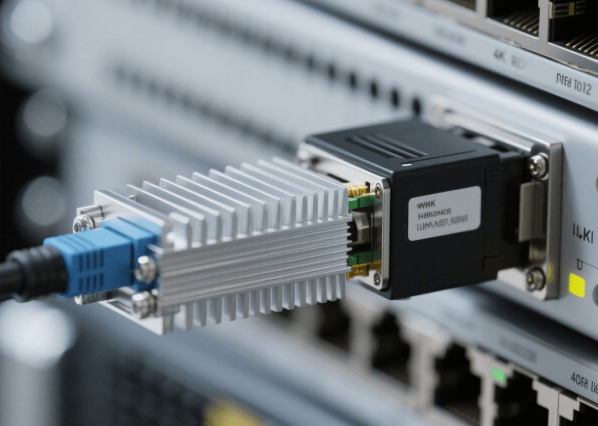
5. Data Rate vs. Baud Rate
Although commonly being used interchangeably, data rate and baud rate are technically different:
- Data Rate (bps) – Amount of bits transmitted per second.
- Baud Rate – Amount of symbols transmitted per second.
More sophisticated modulation schemes like PAM4 carry more bits per symbol. One is able to increase data rate without increasing baud rate, which lessens signal degradation issues at higher frequencies.
For example:
- A 26.5 Gbaud PAM4 transmits 53 Gbps data (2 bits per symbol).
- With NRZ, the same data rate is accomplished at 53 Gbaud.
It is necessary to be aware of this distinction in order to design high-speed transceivers that compromise performance for physical constraints.
6. Circuit Design and Signal Integrity
As transceiver speeds increase, the demands on internal circuits and packaging increase in importance. Optical modules at high speeds require:
- Precise PCB Design – Impedance-controlled traces of the smallest possible length and the best signal routing to ensure lowest losses.
- Clock Recovery and Equalization Circuits – To accurately reconstruct high-speed signals and reduce bit errors.
- New Packaging and Thermal Management – To dissipate heat and maintain stability under constant usage.
Signal integrity has a direct impact on a system’s bit error rate (BER) and establishes whether a particular module can maintain its rated speed over a given period without suffering performance degradation. Issues with signal integrity can cause errors in transmission, an increase in latency, and hardware failure.
Part 3. Common Optical Transceiver Speed Grades and Their Application Scenarios
Different network conditions and performance applications call for different optical transceiver speeds. Here’s an overview of the popular speed grades, typical form factors, and key application scenarios:
| Module Speed | Typical Form Factor | Application Scenarios |
| 10G | SFP+ | Enterprise access, campus networks |
| 25G | SFP28 | 5G fronthaul, Top-of-Rack (ToR) server connections |
| 40G | QSFP+ | Legacy data center backbone |
| 100G | QSFP28 | Core of modern data centers, aggregation layer |
| 400G | QSFP-DD, OSFP | Hyperscale data centers, AI/ML training clusters |
| 800G | OSFP, QSFP-DD800 | Next-gen AI infrastructure, Co-Packaged Optics (CPO) |
10G – SFP+: Entry-Level High-Speed Connectivity
- Use Cases: SPF+ optical transceiver widespread in enterprise access layers, campus networks, and small data centers.
- Advantages: Low-cost, proven, highly interoperable.
- Notes: Though legacy in the data center, 10G remains omnipresent in enterprise and ISP edge deployments.
25G – SFP28: Bridging Efficiency vs. Speed Gap
- Use Cases: Spurred on for 5G fronthaul deployment and Top-of-Rack (ToR) server links in data centers.
- Advantages: Offers a lower-cost-per-bit single-lane solution versus 40G (with four 10G lanes).
- Notes: The 25G design scales to 100G using fewer lanes (four) for better scalability, and that is an attractive choice for next-generation data center designs.
40G – QSFP+: Transitional Data Center Backbone
- Usages: Used in old data center infrastructures and enterprise aggregation layers.
- Advantages: Offers a moderate performance step-up from 10G via 4×10G lanes.
- Notes: Phased out due to efficiency and density limitations for 100G solutions.
100G – QSFP28: Emerging Data Center Standard
- Use Cases: Used extensively in aggregation and core layers of cloud and enterprise data centers.
- Advantages: Scalable, low power consumption, high density; supports both single-mode and multimode applications.
- Notes: Multiple configurations (e.g., CWDM4, PSM4, 100GBASE-LR4) can be supported by QSFP28 modules depending on distance and fiber.
400G – QSFP-DD / OSFP: Hyperscale
- Use Cases: Best suited for hyperscale cloud data centers, HPC, and AI/ML clusters requiring massive east-west traffic.
- Advantages: Enables 8×50Gbps lanes based on PAM4 modulation; offers higher density and throughput.
- Notes: OSFP enables better thermal management in large-scale deployments; QSFP-DD enables backward compatibility with QSFP28.
800G – OSFP / QSFP-DD800: Next-Gen for AI & CPO
- Use Cases: Next-generation AI/ML infrastructure standard, cloud-scale fabrics, and co-packaged optics (CPO) systems in development.
- Advantages: Provides ultra-high bandwidth with 8×100Gbps PAM4 lanes; designed for low-latency and large data workloads.
- Notes: In early adoption phases now but vital to accommodate the geometric growth in AI model size and training data.
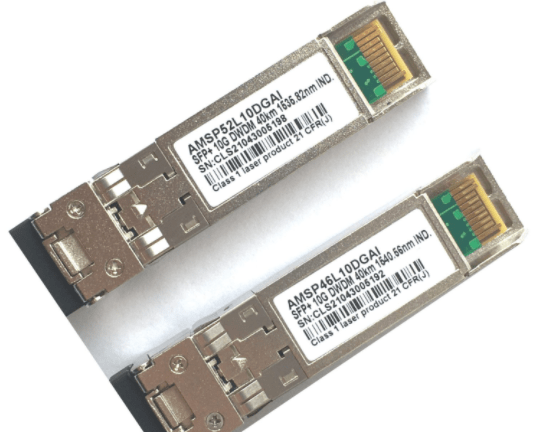
Part 4. How to Choose the Right Optical Transceiver Speed?
Selecting the appropriate optical transceiver speed is not only a matter of having the maximum rate of data available. Instead, it is a balancing act of a number of technical and pragmatic concerns to enable performance, compatibility, and economics.
Keep in mind the following critical guidelines to guide your selection:
1. Assess Actual Bandwidth Requirements
Start by measuring the true bandwidth needs of your network segment or application in the real world. Puffing up speed may incur unnecessary cost and power usage, while deflating it may lead to network congestion.
- For enterprise access or campus networks, 10G or 25G may be enough.
- For core data center or AI workloads, 100G to 800G may be utilized for high-level traffic rates.
Understanding current traffic patterns and planning for growth will avoid early upgrades.
2. Ensure Compatibility with Switch/Router Interfaces
The selected optical module should be compatible with your network equipment’s port type and supported standards.
- Check that the form factor (e.g., SFP+, QSFP28, QSFP-DD) is compatible with the physical slot.
- Check that the switch firmware and software support for the intended transceiver speed and protocol.
A few transceivers are backward compatible, and this can make network evolution more flexible.
3. Consider Transmission Distance and Fiber Type
Various applications have different optical ranges:
- Multimode fiber (MMF) is typically used for short links (up to 100–300m).
- Single-mode fiber (SMF) supports longer transmission (up to 10km, 40km, or more depending on the module).
Choosing the right wavelength and laser type (e.g., VCSEL, DFB, EML) based on distance will have dramatic impacts on cost and performance.
4. Acknowledge Budget and Power Consumption
Higher-speed transceivers are costly, not only per unit, but also in terms of infrastructure (cooling, power supply, cabling).
For example:
- 800G modules deliver breathtaking throughput but require advanced thermal design and wider power envelopes.
- For most mid-tier applications, 25G modules provide an optimal balance between performance and workload efficiency.
- For edge data centres and compact racks, lower power modules are indispensable when operating on a limited budget due to improved efficiency and lower cost.
Summary
An optical transceiver’s speed is not due to a single reason, but a synergy of several issues such as protocol specifications, modulation formats, lane configuration, performance of optical components, and even the design of the circuits. When considering these crucial elements, the more intelligent the choices an organisation or designers make about transceivers for diverse use-case situations, the better.
If you require high-performance, highly compatible, and reliable optical transceiver products, feel free to contact Neon. We are willing to provide you with our technical support.



